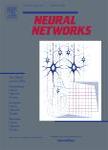版权所有:内蒙古大学图书馆 技术提供:维普资讯• 智图
内蒙古自治区呼和浩特市赛罕区大学西街235号 邮编: 010021

作者机构:Xi An Jiao Tong Univ Sch Comp Sci & Technol Xian Peoples R China Natl Univ Singapore Saw Swee Hock Sch Publ Hlth Singapore Singapore Xi An Jiao Tong Univ Sch Distance Educ Xian Peoples R China Xi An Jiao Tong Univ Sch Cyber Sci & Engn Xian Peoples R China Univ Virginia Dept Comp Sci Charlottesville VA USA
出 版 物:《NEURAL NETWORKS》 (Neural Netw.)
年 卷 期:2025年第185卷
页 面:107194页
核心收录:
学科分类:1002[医学-临床医学] 1001[医学-基础医学(可授医学、理学学位)] 0812[工学-计算机科学与技术(可授工学、理学学位)] 10[医学]
基 金:National Natural Science Foundation of China Key Re-search and Development Project in Shaanxi Province [62302380, 62192781, 62037001, 62250009, U24B20185, T2442014, 62161160337, 62132011, U21B2018] Shaanxi Province Key Industry Innovation Program [2022GXLH01-03] China Postdoctoral Science Foun-dation [2023-ZDLGY-38, 2021ZDLGY01-02] Shaanxi Continuing Higher Education Teaching Reform Research Project [2023M742789] 21XJZ014
主 题:Graph anomaly detection Bipartite graph modeling Self-supervised learning
摘 要:Detecting anomalies in attributed networks has become a subject of interest in both academia and industry due to its wide spectrum of applications. Although most existing methods achieve desirable performance by the merit of various graph neural networks, the way they bundle node-affiliated multidimensional attributes into a whole for embedding calculation hinders their ability to model and analyze anomalies at the fine-grained feature level. To characterize anomalies from each feature dimension, we propose EAGLE, a deep framework based on bipartitE grAph learninG for anomaLy dEtection. Specifically, we disentangle instances and attributes as two disjoint and independent node sets, then formulate the input attributed network as an intra-connected bipartite graph that involves two different relations: edges across two types of nodes described by attribute values, and links between nodes of the same type recorded in the network topology. By learning a self- supervised edge-level prediction task, named affinity inference, EAGLE has good physical sense in explaining abnormal deviations from each attribute. Experiments corroborate the effectiveness of EAGLE under transductive and inductive task settings. Moreover, case studies illustrate that EAGLE is more user-friendly as it opens the door for humans to understand abnormalities from the perspective of different feature combinations.